If you haven’t heard of hill climb racing before, it’s a slightly eccentric British tradition in which riders race up steep and usually short hills as fast as humanly possible.
It’s a time trial format and you can easily race four times on any weekend during the September to October season. If there’s a more intense/painful season in cycling, I’m yet to find it.
Each year, the season gives me the chance to build a brutally climbing-focussed bike, which needs to be as light as possible without turning into a spindly noodle. 2018 was no different, and I believe I ended up with the best hill climb bike I’ve ever ridden. Here’s the run-down of how I did it.
Joe Norledge's 5.1kg Trek Emonda Hill Climb build
- Frameset: Trek Emonda Project One, 58cm
- Front brake: Cane Creek EE Brake (direct mount)
- Rear brake: Cane Creek EE Brake (direct mount)
- Brake/shift levers: SRAM Red 22 cable
- Front derailleur: N/A
- Rear derailleur: SRAM Red 22
- Cassette: SRAM Red 22, 11-28T
- Chain: KMC 11-speed
- Crankset: SRM Origin power meter
- Wheelset: Schmolke TLO 30 tubular
- Tyres: Vittroia Corsa Speed (25c) Tubular
- Handlebars: Schmolke TLO
- Tape/grips: N/A
- Pedals: Shimano Dura-Ace
- Saddle: Bontrager XXX
- Seatpost: N/A
- Bottle cages: N/A
- Computer: N/A
Frame and fork
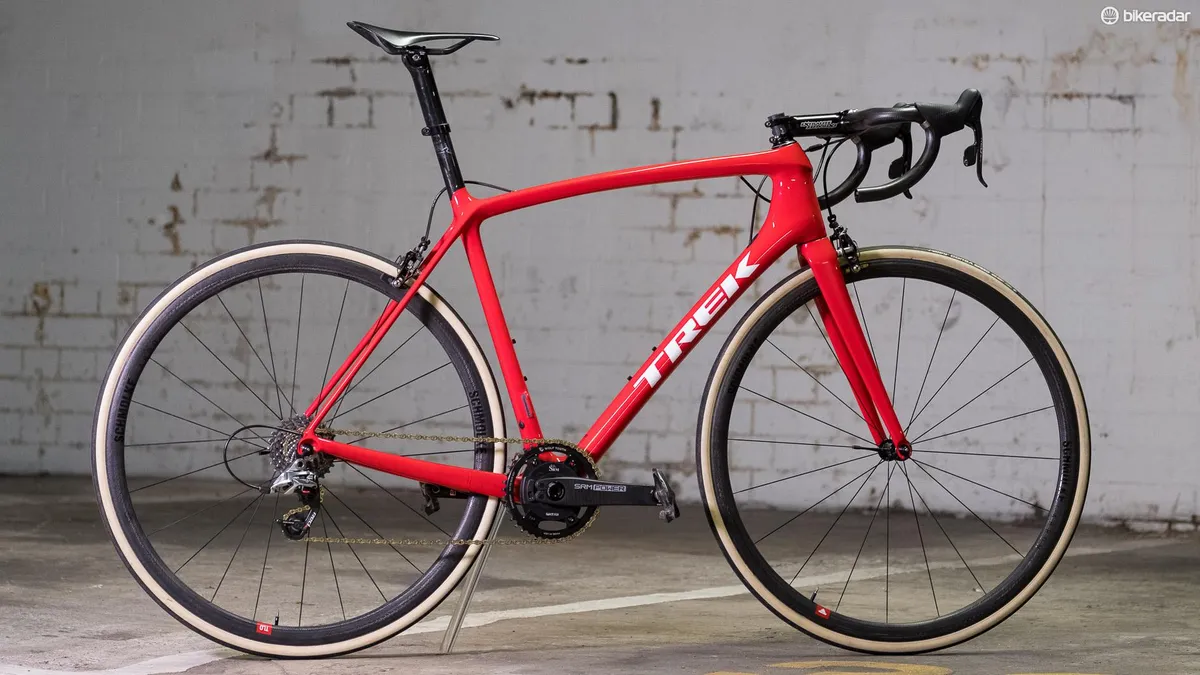
There are plenty of lightweight frames and forks out there, but perhaps none are as synonymous with weight weenie(ism) as Trek’s Emonda. The most recent iteration was released in 2017 and represents all Trek’s know-how in building a featherweight bike, all while retaining the stiffness needed for WorldTour racing.
I ordered a red Project One Emonda with Trek's more aggressive H1 fit and rim brakes. Even though I’d be mostly using it for thrashing up short sharp hills, I still wanted the racier geometry, and rim brakes to keep the weight as low as possible.
My size 58cm weighed exactly 750g on the nose, without the fork. For a painted frame, that’s about as light as they come.
Schmolke’s TLO tubular wheels
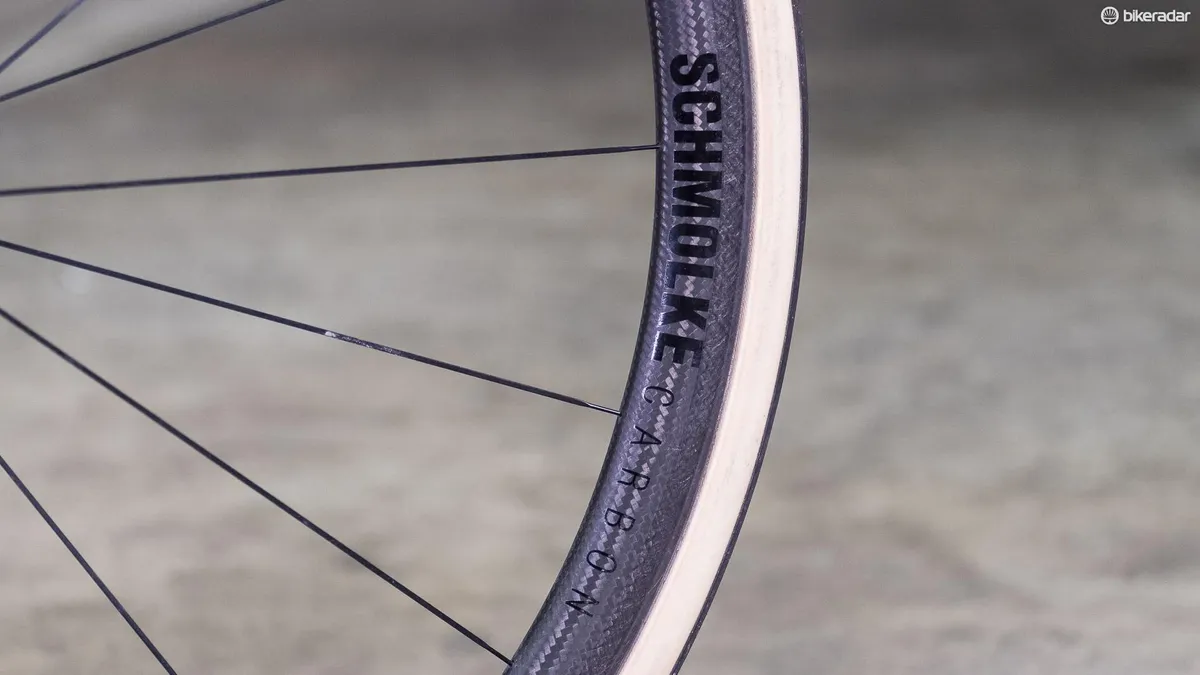
Wheels are one of the key areas where you can save a significant chunk of weight for a hill climb build and chances are they’ll significantly lighten your wallet as well.
Having used Schmolke’s TLO tubular wheelset during the 2017 season, and being seriously impressed with them, I saw no reason to change in 2018.
They’re not the lightest out there, at 940g for the pair, but they feel plenty stiff for such a relatively feathery product and have a 105kg weight limit. Being tubular meant they’re not the most practical wheelset and were only saved for race days, but Schmolke does offer a more user-friendly clincher version, which comes with a slight weight penalty.
Vittoria’s Corsa Evo 25mm tyres
Wheels are no good without tyres and I spent many an hour fretting about which tyres to choose. Many hill climb racers opt for super-light track tubs. These can weigh in as low as 140g, but there’s a huge risk of puncturing, even if you may only be riding on them for a relatively short period of time.
Eventually, I settled on Vittoria’s Corsa Evo 25mm tubs. They’re still light, but have a moderate amount of puncture protection, meaning I had some peace of mind that I (fingers crossed) wouldn’t puncture.
They also come with tan sidewalls, so, in my humble opinion, look damn cool.
SRAM’s RED groupset
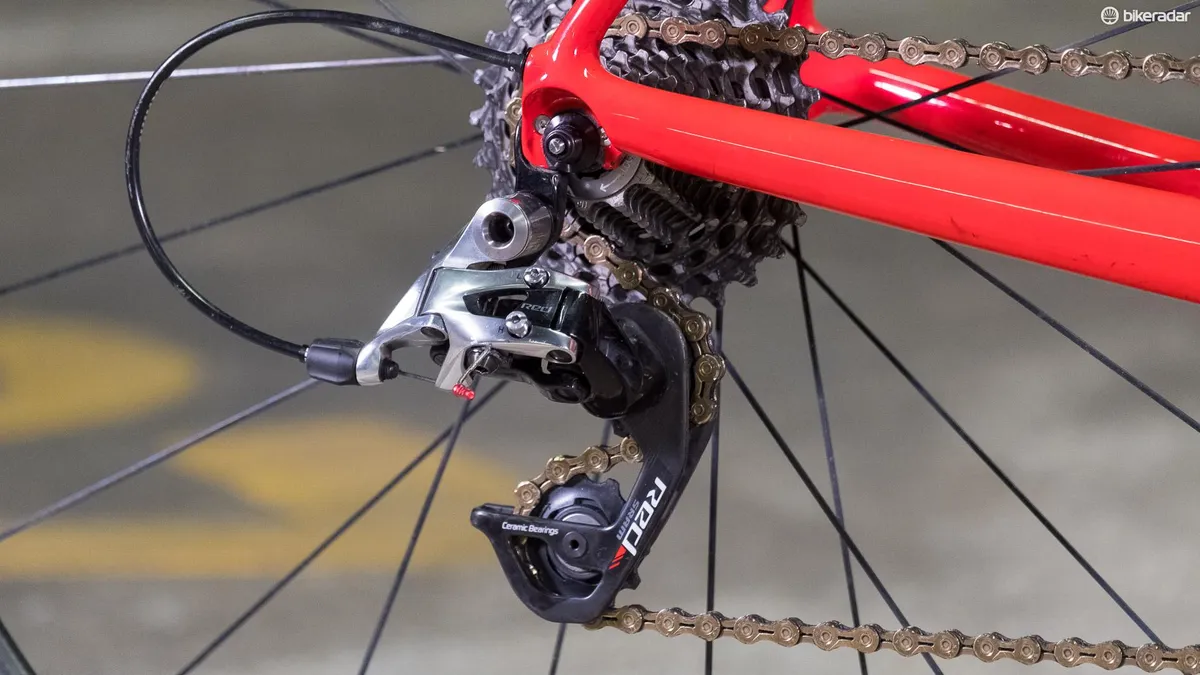
The groupset was another area where I fretted over various options before choosing SRAM’s RED 22 cable groupset.
Why didn’t I choose electronic? The paramount reason is weight. You might get an ever so slightly swifter shift with electronic gears, but both SRAM and Shimano’s battery-powered groupsets still come in a touch heavier than a SRAM RED cable groupset. As this build was all about reducing weight, a mechanical groupset was the way to go.
A downside is that I had to stay on top of cable tension and maintenance of the groupset in order to make sure shifting was always as crisp as possible. However, on the whole, I had no issues during the 2018 season.
SRM Origin power meter

The power meter I chose was a real standout ‘Gucci’ product for my build, coming from SRM. Its Origin model features full carbon crank arms made by French manufacturer Look and a crank spider-based power measurement. This meant a more precise power reading compared to the single sided Stages power meter that many hill climbers use.
It’s certainly not cheap, and a real boutique product, but a crank-spider-based 537g power meter was exactly what was required for this high-end build. If I had the money I’d by one, but that won’t be happening anytime soon, and I’ll miss it once it goes back to SRM.
Cane Creek EE brakes

I used standard mount Cane Creek EE brakes on my Fuji SL during the 2017 hill climb season and saw no reason to change for 2018.
The only difference was that the Trek Emonda is built around direct mount brakes, which come in a few grams heavier, but I was more than happy to sacrifice some weight for the improved stopping power that direct mount brakes bring.
Stem
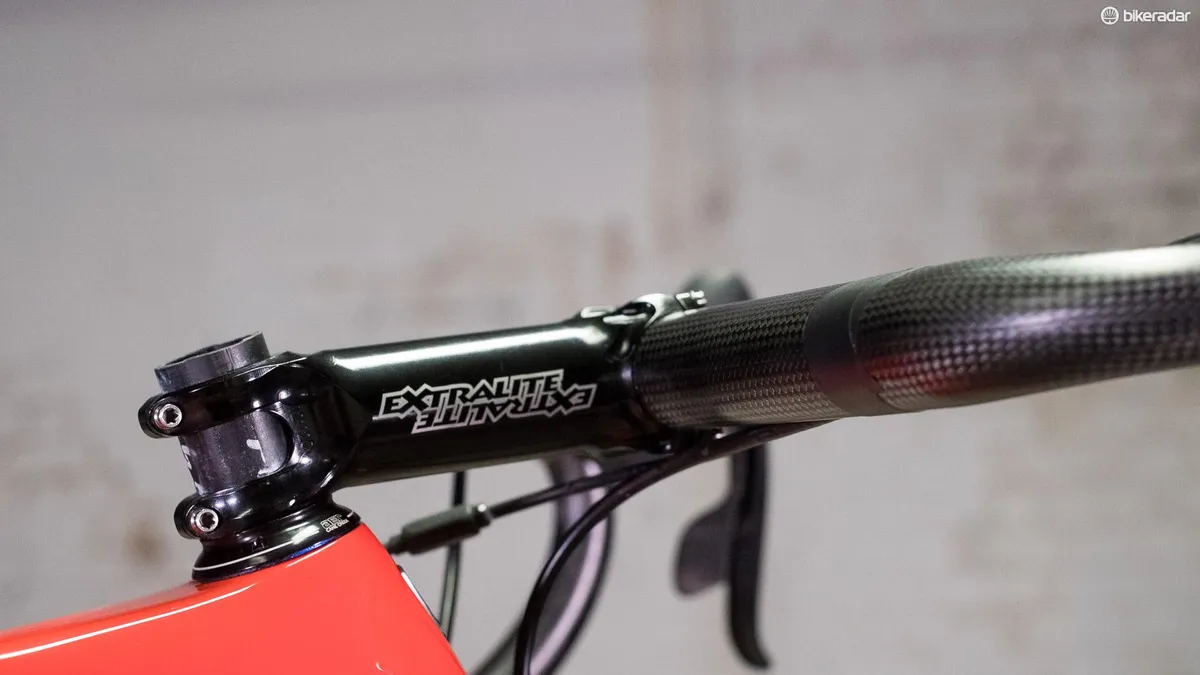
I have fairly long arms and short legs, which means I usually need at least a 120mm stem to feel right at home on a road bike. The Emonda was no different and luckily enough I still had a 120mm Extralite stem, which featured on my 2017 hill climb bike.
Based in Italy, Extralite makes all of its products in house, and this aluminium 120mm stem weighs a mere 88g.
The torque tolerances are scarily low (around 3Nm), so you better have an accurate torque wrench. But in two years I’ve never had any slippage or scary creaks from the stem, so it’s a product I wholeheartedly recommend for a lightweight build.
Schmolke TLO road handlebars
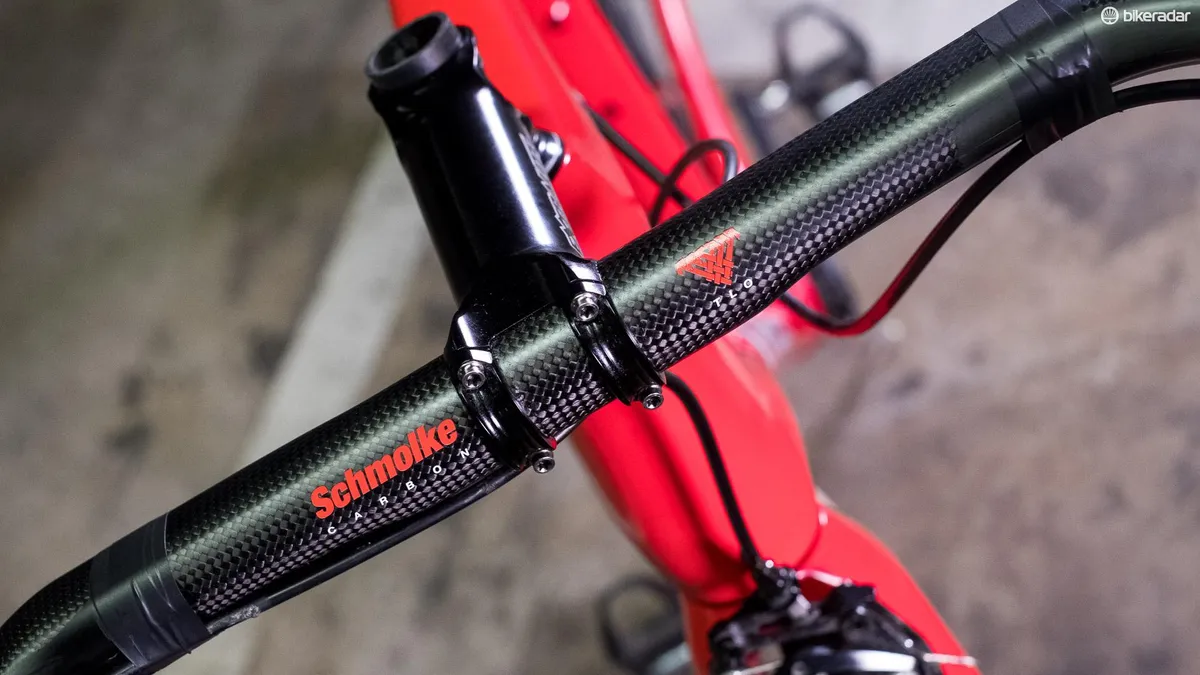
I had a few different handlebars setups on my Emonda during the 2018 season. They all performed well, but the Schmolke TLO road bars, which arrived just in time for the national championships, were a real standout product.
How much do they weigh? Try 145g for a set of weight weenie handlebars, and they still felt incredibly stiff and responsive under harder efforts.
Some hill climbers saw the drops off of their bars in order to save every last gram, but I don’t think Schmolke would have been very happy if I’d cut its lovely handlebars down, so they stayed intact, for now at least…
Bontrager saddle
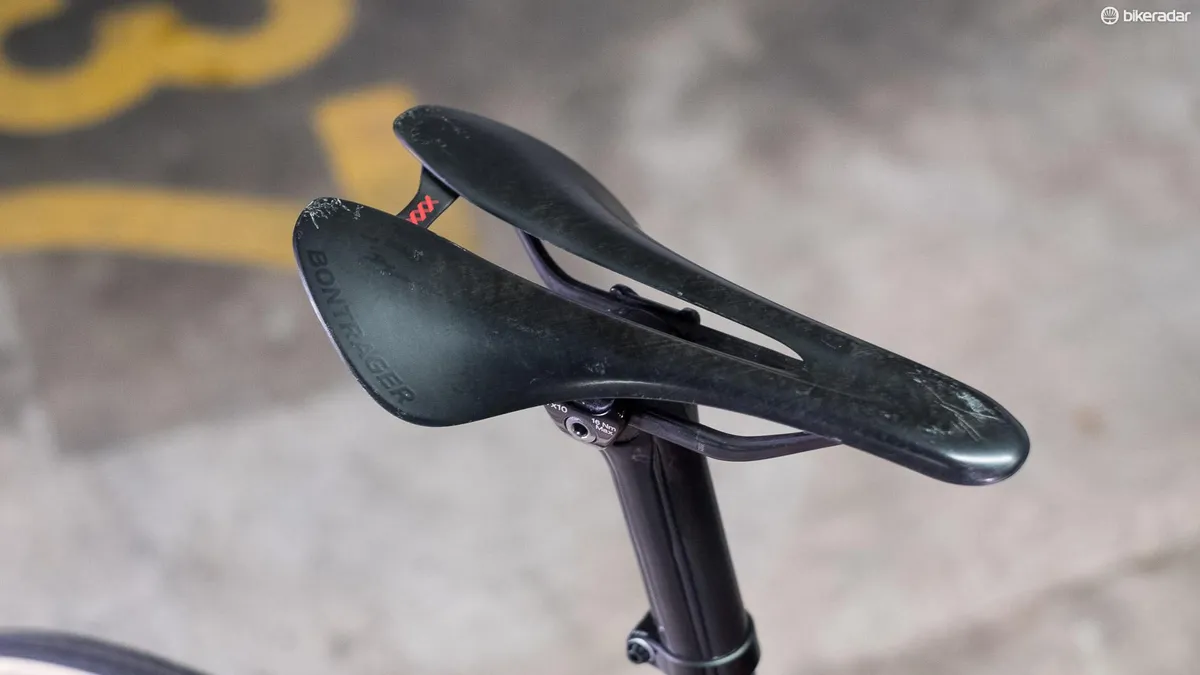
The Bontrager saddle that came with the frame weighed a respectively light 76g. The base felt incredibly firm, even for an all-carbon saddle, so it wasn’t the comfiest, but for the three months of hill climb season, it was a price I was willing to pay.
Extralite QR skewers
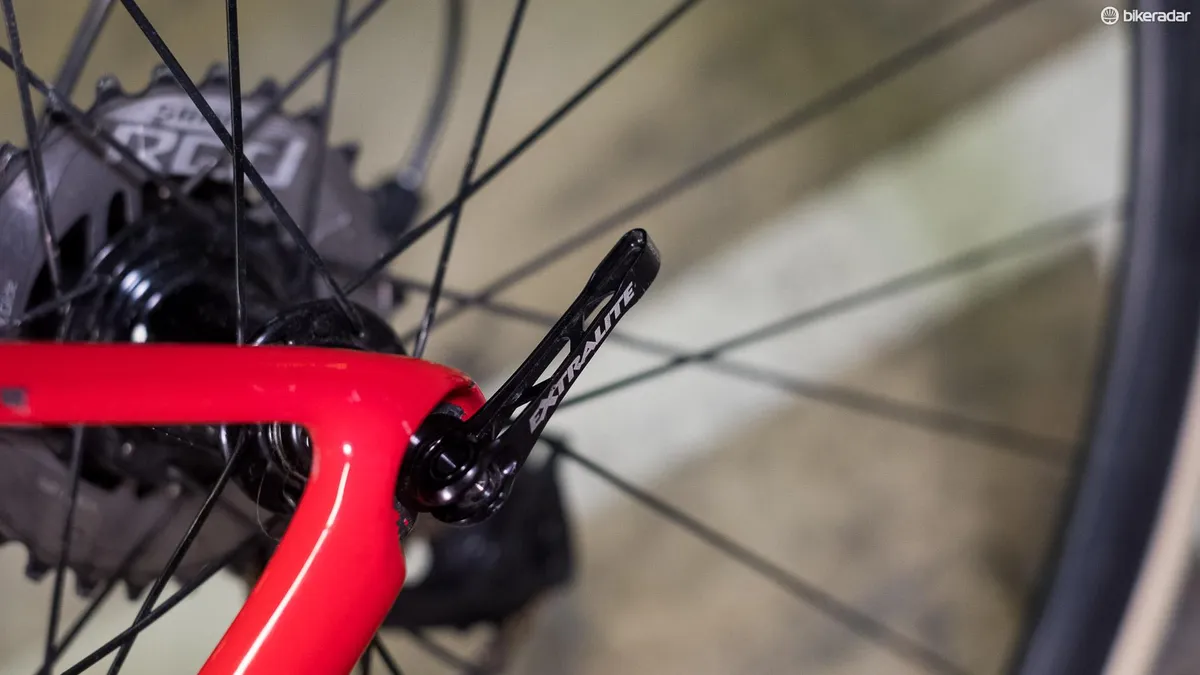
Skewers, again, came courtesy of those Italian lightweight component specialists Extralite. They weigh just 30g for the pair, meaning they’re just about as light as they come.
You have to be quite careful with how hard you tighten them because the levers are so light that there’s a chance they could easily bend. That being said, throughout the whole season my wheels never moved in the dropouts, so despite their flimsy appearance, the Extralite skewers didn’t put a foot wrong.
Wolf Tooth 40t chainring

Most hill climbers choose to go 1x with their chainring, it saves plenty of weight and keeps things nice and simple. I was no different, using a 40t chainring from Wolf Tooth.
40t may sound fairly large for a bike designed to ride almost exclusively uphill, but you’re moving surprisingly fast when thrashing out of the saddle at 500 watts plus, so a 40t is just about right for me.
If that sounds big, then consider for a moment that the 2018 national champion Andrew Feather ran a 44t throughout the season, even when gradients crept over 25 percent!
Shimano Dura Ace pedals

I used two sets of pedals during the 2018 hill climb season, including some very lightweight Time Xpro 15s, but I eventually settled on my ‘old faithful’ Shimano Dura Ace models.
These are by no means a light pedal, but I get on well with the wide/stable pedaling platform, so they felt a bit firmer when pressing hard on the pedals compared to the Xpro 15s.
Shoes
Even though they’re not directly related to the bike, I wanted to mention Giro’s Techlace shoes. Just like every other product on this list they have class-leading lightweight credentials and still felt plenty stiff enough for my 62kg frame.
If you were a pure sprinter or a very powerful rider, I’d caution against using these shoes because the upper is fairly flexible. They’d also get ripped to shreds in a crash, but I’ve not seen a crash in a hill climb for a long time, so for me they were spot on and I suspect I’ll be using them if I’m hill climbing in 2019.
Honourable mentions

I did all of my training on the Emonda during the season, and the only modification needed to turn it into a mile-munching steed was swapping the ever-so-light, but slightly impractical Schmolke wheels, for a still light(ish) but far more user-friendly set of Knight 35s.
They were set up tubeless and shod in Schwalbe Pro One 28mm tyres, meaning they felt incredibly comfortable during those tough training rides, where mind and body begin to buckle.
They are fairly wide, with a 19.5mm internal width and 28mm outer width, meaning I’d have to fettle with the brakes every time I switched from the narrower Schmolke wheels to the wider Knights, but these are an impressively robust set of high-end wheels, so look out for a full review on BikeRadar soon.

